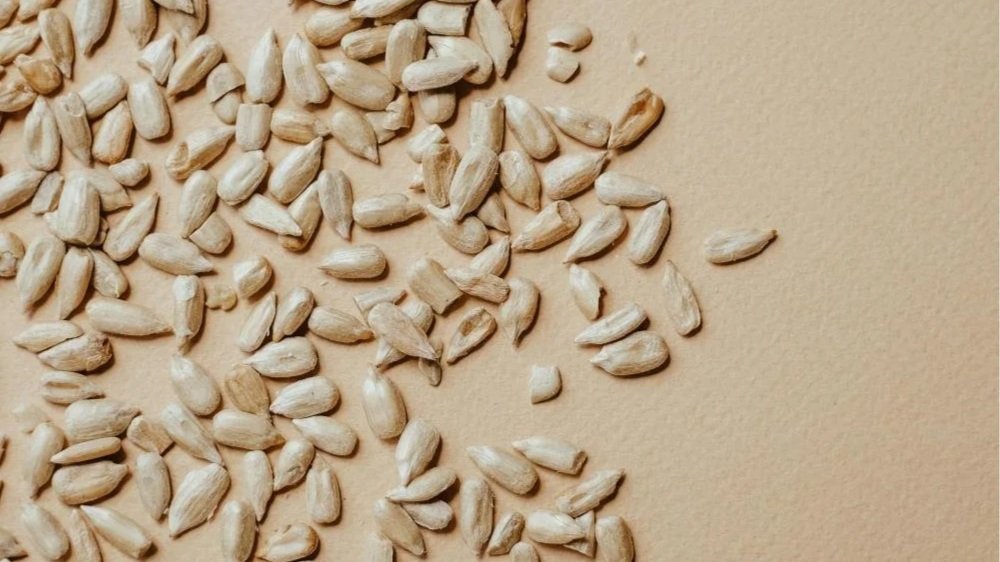Sunflower Seed Pesto for Hormone Balance
You know those afternoons where you just want something light, zesty and nourishing that feels like it’s doing your body good? I was in that exact mood recently when I threw together this sunflower seed pesto. I needed something hormone-supportive, wallet-friendly and free from nuts for a client, and this recipe delivered on every front.
This pesto is now one of my go-to staples. It’s fresh, creamy, and rich in nutrients that support healthy ovulation and progesterone production. Plus, it fits perfectly into a seed cycling protocol or just as part of your everyday hormone-friendly meal prep.
Why Sunflower Seeds Support Hormone Health
Sunflower seeds are small but mighty. Here’s why they’re especially supportive for women’s hormones:
Vitamin E supports progesterone production and acts as an antioxidant in hormone-sensitive tissues (Coad et al., 2011)
Selenium plays a key role in thyroid and ovarian health, and may reduce inflammation (Rayman, 2012)
Zinc is essential for ovulation, oestrogen metabolism and immune function (Oliviero et al., 2023)
In seed cycling, sunflower seeds are typically consumed in the luteal phase (days 15–28) of your menstrual cycle, helping to support progesterone and calm inflammation. If you’re new to seed cycling, I recommend reading my seed cycling blog post, where I explain the protocol and how it can be used to support conditions like PMS, irregular cycles or post-pill recovery.
You can also grab my free cycle sync grocery list, which breaks down foods by menstrual phase and includes seed cycling guidelines.
Why You’ll Love This Recipe
Nut-free and school-friendly
Budget-friendly using affordable sunflower seeds instead of cashews or pine nuts
Hormone-supportive and perfect for seed cycling or nourishing your luteal phase
Versatile and easy to meal prep for the week
Freezer-friendly so you can make a big batch and save time later
Sunflower Seed Pesto
Ingredients
2 cups fresh basil
½ cup sunflower seeds
½ cup grated parmesan
1 clove garlic
Juice of 1 lemon
1 cup extra virgin olive oil
½ cup water
1 teaspoon salt
¼ teaspoon black pepper
Method
Add all ingredients to a food processor or blender.
Blend until smooth, scraping down the sides as needed.
Taste and adjust seasoning if necessary.
How to Use It
This pesto is incredibly versatile. You can:
Stir it through warm pasta or zucchini noodles
Spread it on sourdough toast with eggs or tomato
Use it as a dressing for roasted veg like sweet potato or pumpkin
Serve it as a dip with crackers or veggie sticks
Add a dollop on top of scrambled eggs, frittatas or baked salmon
If you love recipes that sync with your cycle, you’ll also love my 5 seed crackers, perfect for seed cycling!
Looking for Personalised Hormone Support?
If you’re trying to get your cycle back on track, manage PMS, support fertility or balance hormones naturally, nutrition can be a powerful tool. Book a free 10-minute discovery call with me to explore how we can work together.
References
Coad, J., Pedley, K., & Pedley, K. C. (2011). Zinc and reproduction: Effects of zinc deficiency on reproductive development in humans. Animal Reproduction Science, 123(3–4), 277–282. https://doi.org/10.1016/j.anireprosci.2011.01.010
Oliviero, T., Verkerk, R., Dekker, M., & Fogliano, V. (2023). Nutritional relevance of seeds and their bioactive compounds in hormonal health. Food Research International, 173, 113157. https://doi.org/10.1016/j.foodres.2023.113157
Rayman, M. P. (2012). Selenium and human health. The Lancet, 379(9822), 1256–1268. https://doi.org/10.1016/S0140-6736(11)61452-9
Viuda-Martos, M., Ruiz-Navajas, Y., Fernández-López, J., & Pérez-Álvarez, J. A. (2014). Spices as functional foods. Critical Reviews in Food Science and Nutrition, 51(1), 13–28. https://doi.org/10.1080/10408390903044271
© 2025 Feminalysis. All rights reserved. No part of this recipe may be reproduced without written permission


